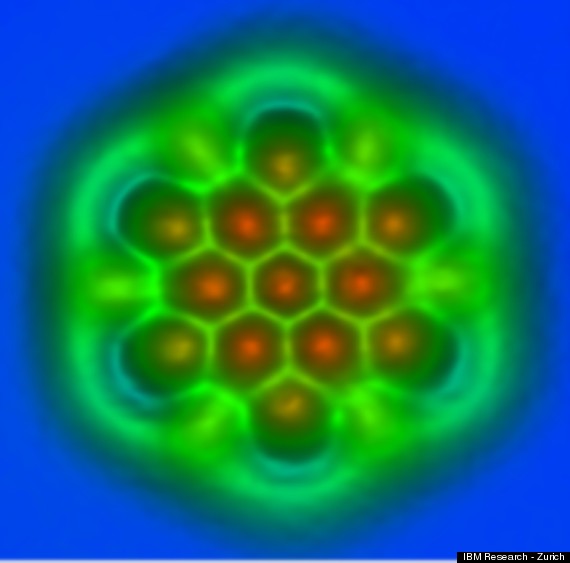The new IBM microscope shows interatomic bonds in the molecule

The research division of IBM Research in Zurich published pictures that could be generated using a scanning atomic force microscope (AFM). In the images, individual carbon atoms in a spherical C 60 molecule can be distinguished. Even chemical bonds between atoms are visible, that is, overlapping electron clouds (“smeared” electrons, in Schrödinger terminology).
In 2009, it was this group of IBM scientists who first obtained a photograph of a single molecule: this historical snapshot of the pentacene molecule of five benzene rings. That photo was taken at a temperature of 5 ° K in ultra high vacuum.

')
Now scientists have significantly increased the resolution of the AFM, although it works on the same principle. At the end of the sensitive AFM head, a separate carbon monoxide (CO) molecule is placed, which swings above the scanned surface. When approaching "alien" atoms, our molecule experiences attractive forces and slightly changes the amplitude of swaying.

Measuring the changes in amplitude, the AFM draws an image of the scanned surface with an incredible resolution of 3 picometers (3 × 10 -12 m), which is slightly more than 1/100 of the diameter of the carbon atom. The blue and green colors on the “photo” are a convention.
Such a high resolution of the microscope opens up amazing perspectives: we can see with our own eyes how chemical reactions take place at the molecular level, and also better study the structure of materials with unique properties, such as graphene. Theoretically, it was known that carbon atoms in graphene and other substances are at different distances from each other and differ in bonding strength: if they are strong in the same graphene, then in molecules, for example, aromatic hydrocarbons, bonds are much weaker, although the atomic lattice there is similar to hexagonal forms. Now we can see this difference with our own eyes.

A better study of the molecular structure will advance the study of new materials and will allow the creation of more efficient organic photocells, organic light emitting diodes (OLED) and other materials.
IBM Research findings are published in the journal Science .
Source: https://habr.com/ru/post/151574/
All Articles